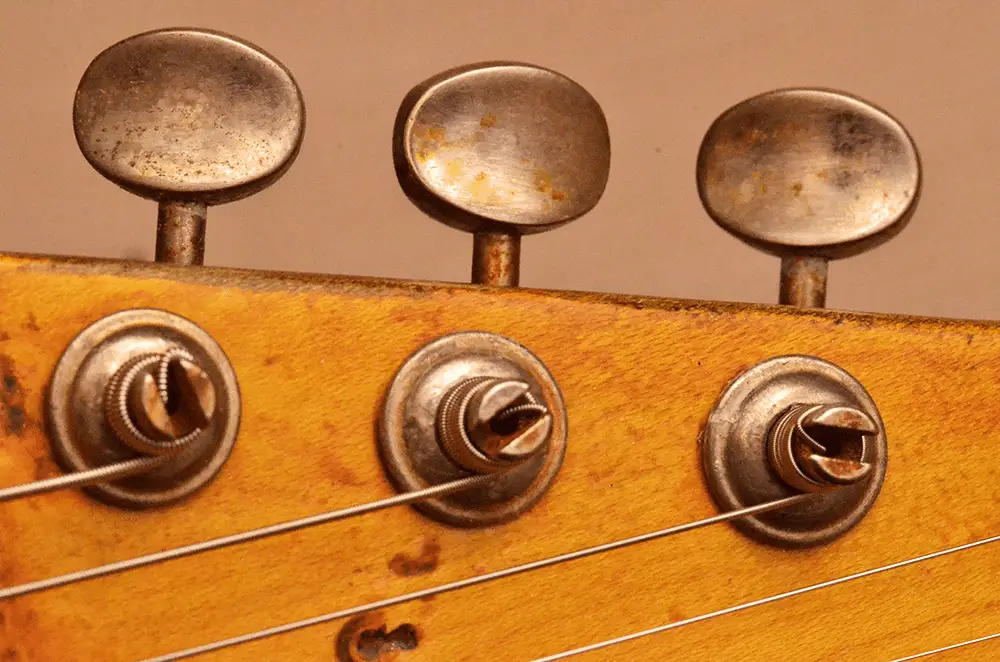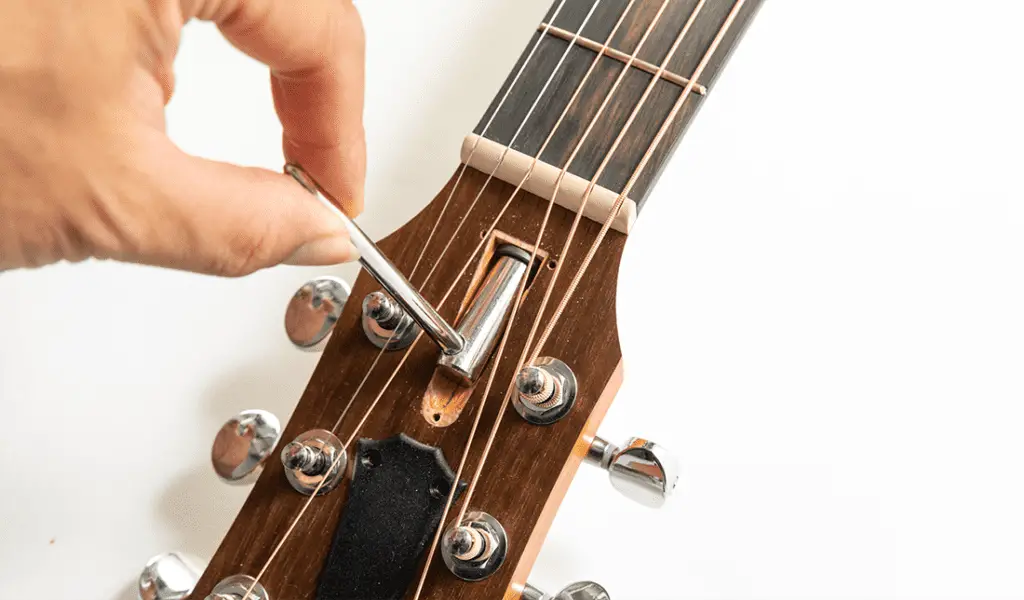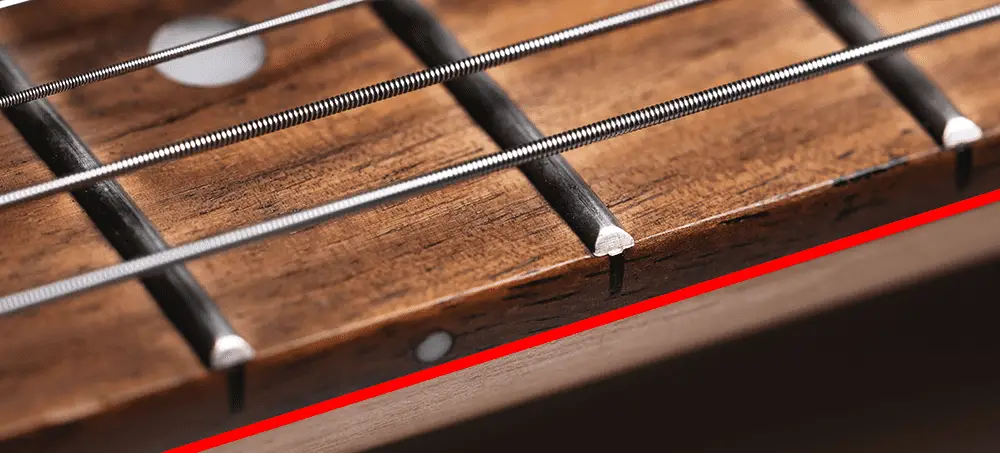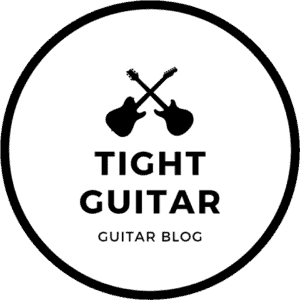
Many guitar players, beginners or experts, don’t know a single thing about guitar maintenance. Moreover, some of us live in places where finding a guitar technician is practically impossible, so what would you do if your guitar fell, got hit, and now there’s something wrong with it?
If your guitar fell down and got hit, you should examine it thoroughly and look for any breaks, cracks, or shifting components. Make sure to consider the direction of the fall, the guitar’s model, and the manufacturer when trying to spot the problem.
In this article, you will learn how to find and classify different problems in a guitar that could arise from a fall or a hit, and categorize these issues according to model, manufacturer, and component. Some are easy to fix even for an untrained individual, and others require a trip to the guitar technician.
How to check my guitar for hits
The first step of handling the problem would be to ask yourself how the guitar fell, where it got hit, and start examining the instrument in these areas. Check for scratches or cracks in the lacquer, crooked components, or bent parts.
Step two would be to check its tuning. Plug your guitar into an amplifier and pay attention to how much it got out of tune (if any). Try to remember how it was before it fell and think if there is any significant difference compared to its current condition.
As mentioned before, different guitar models will usually have different problems, so let’s start classifying these problems according to the model and manufacturer.
Reoccurring issues with Gibson guitars that fell and got hit

Gibson Neck breaks and why does it happen
Due to their weak headstock design, some Gibson guitars tend to crack or even break in the neck area. It could happen if the guitar falls down or somehow gets hit, or in rare cases, it could even snap due to the natural weakness of the headstock area!
The weakness in Gibson guitars arises from the slanted headstock design. This design flaw puts the guitar body and the headstock on different levels. For example, if the guitar is laid down on the floor, most of the body floats, and all the guitar’s weight is concentrated in the headstock area. Moreover, the truss rod tunnel also goes through that connection point and weakens it even more.
A break or even a small crack could significantly impact the playability of this guitar model. If it happens, you should take it to a professional guitar technician instead of trying to fix it by yourself.
In case you do have some experience with treating electric guitars, here is a complete step-by-step guide on fixing a broken Gibson neck:
Materials:
Polish
Super Glue
Dunlop polish
Titebond wood glue
V7 Red pen
Tools:
C shaped clamps
Philips head screwdriver
10 mm wrench
Nut Breakage
Another common problem that could arise from a falling Gibson guitar is a nut break. If the guitar has fallen face-down (usually from a stand), the nut is the first thing to hit the ground and potentially break. Look closely for a break or even a tiny crack. It could seriously affect the string location.
Solving this issue could be a little complicated for an untrained person because it requires special filing tools and specific adjustments. Therefore, it is highly recommended you’d take your guitar to a technician how knows how to build a nut.
If you have some experience with treating electric guitars, here is a complete step-by-step guide on making a bone nut from scratch.
Materials:
Tools:
Radius block
Scalpel
The string spacing rule
Double edge nut files
Bent or broken guitar tuners (tuning machines)
Gibson tuning machines are pretty dainty and could easily bend or break. Fortunately, this is a simple problem that can be solved even by an untrained individual such as you. All you need is a wrench, a screwdriver, and new tuning machines.
- Gibson guitars tend to go out of tune pretty fast, so you should consider replacing your tuning machines with locking tuners. We recommend Grover locking tuners for Gibson guitars! They are good, dependable, and will keep your strings in tune for a longer time – mini/regular/gold
Here is a complete step-by-step guide on how to install Grover tuning machines on a Gibson.
Broken Jack Plate

Gibson guitars come with a plastic Jack plate that can easily break during a fall or a hit. In some cases, it could even break from pulling the cable too hard in the wrong direction. In that case, the best thing to do is to replace the plastic plate with a metal Jack plate, which will ensure this problem won’t return!
Replacing the Jack plate is a very simple job and could be done by an inexperienced individual. All you need is a screwdriver and a new metal Jack plate.
Common issues with Fender guitars that fell and got hit

Neck Movement
The most common problem that could arise from a falling Fender guitar is the movement of the neck inside the pocket. The source of that problem lies within the fact that in Fender guitars, the neck is connected to the body using only bolts (bolt-on connection). Try to play the guitar. If it drastically got out of tune, it could be a clue that the neck has shifted.
Handling this problem can be a little complicated, but it sure is possible even for an untrained individual. The first thing you need to do is to understand the direction in which the neck has shifted. If the neck has slanted upwards, the bass strings would be too close to the end of the fretboard. If the neck has slanted downwards, the upper strings would be closer to the fretboard’s end.
To fix that problem, loosen the bolts at the back of the guitar (just a little), and center the neck so there will be equal distance between the outer strings (low and high E) and the ends of the fretboard. After the neck is centered, tighten back the bolts to lock the neck in place. Congratulations, you have fixed the problem!
Bent or broken tuner

Though it is pretty uncommon with the Fender models, a tuning machine could bend due to a strong hit or a fall. However, it will usually not affect the guitar’s playability and will only be an aesthetic defect. In case the tuner breaks, replacing it is a reasonably easy job even for an untrained individual.
The tools you need to install new Fender tuners (vintage) are a wrench and a screwdriver. It is highly recommended to get Fender locking tuners instead of regular ones. They make the string installation much faster and the guitar in tune for a longer time.
When Hollow-body, acoustic, and classical guitars fall or get hit

Breaks & Cracks
A break or a crack in these guitars could happen at the top, back, sides, or inner bracings of the guitar. To understand if your guitar is cracked or broken, play on it. If it sounds “choked” and got no sustain, it is probably broken or cracked somewhere.
Check the action of the guitar. If the guitar’s action has lowered, it could mean that there is a break at the top or inner bracings, which could make the bridge dive.
This kind of problem demands professional intervention, and it is not recommended to try and fix such a problem by yourself.
- A good technician will know to lightly tap the guitar in order to find hidden cracks or breakpoints. He may also use an Endoscope camera to locate the problem. In most cases, a crack or even a break in the guitar’s braces and body is fixable.
A separating top or back
If a hollow-body guitar falls or gets hit, the topside or backside wood plates could separate from the rest of the body. This kind of problem is hard to miss and will significantly affect the guitar’s sound.
Fixing separated parts of hollow-body guitars requires special clamps (Spool clamps) and professional care. We do not recommend trying to fix such a problem by yourself.
Common issues with Floyd Rose
When a guitar with Floyd Rose falls or gets hit, there is a risk that the mounting studs (also called mounting pins) will break, crack the wood of their cavity, or simply bend. To spot such an issue, check if the Floyd Rose shifted in any way. The Floyd Rose system should be parallel to the pickups and positioned vertically in relation to the guitar’s centerline. If it looks like something has shifted, you might need to replace the studs.
Replacing Floyd Rose studs is possible even for an untrained individual, as long as the cavities didn’t get hurt. There are many types of Floyd Rose pins, so make sure to look up the specs of your guitar model before you buy anything.
Author’s note: The main problem with Floyd Rose is its instability, and there are different tremolo systems that can do everything Floyd Rose does (except dive bombs). My personal recommendation is the Dusenberg Les Trem system. It is more stable, of higher quality, and matches the already existing bridge holes of many guitars, making installing this system really easy.
General issues that could arise from a guitar getting hit

If the guitar fell front side down
Sometimes a guitar can fall frontwards and hit some object on the way down. When it happens, the strings might hit the frets and score them, which may produce bending difficulties and buzzing. This type of problem requires professional care, including the leveling of the frets.
- If a guitar falls on its front side, the strings might get bent, and their ability to properly tremor will deteriorate. It is highly recommended to replace the strings after such a hit.
Electronic issues that may arise from a fall or a hit
When a guitar falls or gets hit, the problem is usually not the electronics, but still, there are a few more common issues that revolve around.
1. Electronic components that are installed straight on the body
Many guitars have knobs installed straight on the wood instead of on the pickguard (like Gibson guitars or hollow-body guitars) that can get hit during a fall. These types of hits can result in the bending or cracking of the wood at the connection point of the knob.
To understand if that’s the problem you’re facing, look closely and search for any bent or broken knobs. This kind of problem might be too complicated to fix for an untrained individual and should be handled by a professional guitar technician.
2. Three-way and five-way switches
Three-way and five-way switches are quite delicate components and tend to break more. If the switch has stopped working or is making crackling sounds when you shift between modes, it should be replaced.
Replacing a three or a five-way switch is a relatively simple task with just a little bit of soldering and can be done by an untrained individual.
String buzz and what to do about it

There are a few different types of string buzz, and each of them may indicate another problem in the guitar:
- Open string buzz – If any of the open strings buzz, the problem might reside in the nut. It could be a crack or a fracture.
- Buzz in the high frets – A buzz in the higher frets (frets number 10-12 and higher) may be a symptom of a shift or a dive of the bridge, depending on the guitar model: If you have a solid-body guitar, there is a good chance that the bridge mounting screws got hit. If we are talking about a hollow-body guitar, such a buzz could be the outcome of a crack or a fracture in the top wood or one of the guitar’s braces.
- A buzz on a specific point of the fretboard (not including open-string buzz) will usually indicate a problem in one of the frets (that may have gotten hit) or a faulty string. Look for any breaks or cracks in the buzzing fret, and if everything looks okay, try to replace the problematic string.
Truss Rod problems

It is unlikely that the truss rod would suffer damage due to a fall. Quite the contrary, It will even function as a shock absorber in this situation. Truss rod issues will usually arise from improper use or a manufacturing flaw.
Don’t mess with the truss rod if you are not a guitar technician! Most chances, you’ll do more harm than good.
The Guitar Pickups
Some guitars have mounting rings around their pickups. Unfortunately, these plastic mounting pieces are pretty weak and can easily break if the guitar falls or gets hit. Recognizing and repairing such a problem would be feasible even for an untrained individual. All you need is new mounting rings and a screwdriver!
- Make sure to order the right mounting ring size as there are different sizes for different guitar models.
Check the fretboard!

A hard blow to the right spot can make the fretboard separate from the guitar’s neck. This kind of breakage will usually appear in the area of the first frets and will cause buzzing in these same frets. Your guitar may also sound “choked” or “ hollow” due to this kind of issue.
To spot such a break or crack (which can sometimes be really small), try loosening the strings and look for any lacquer cracks.
This kind of problem might be too complicated to fix for an untrained individual and should be handled by a professional guitar technician.

